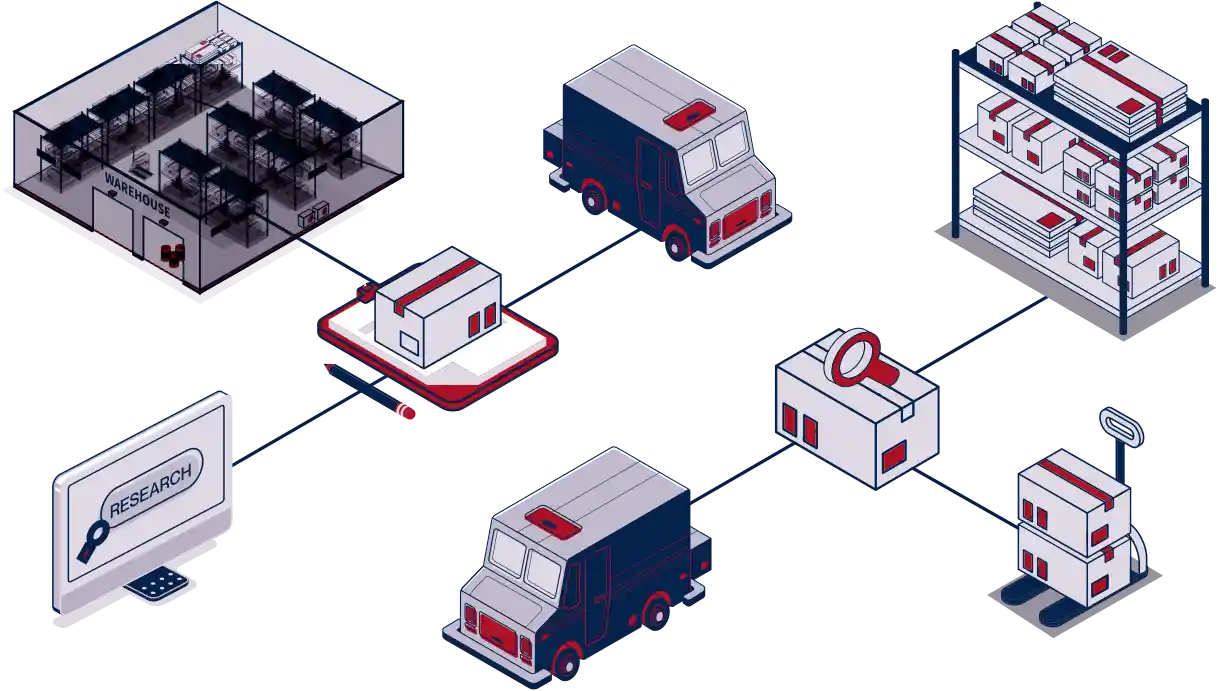Freight shipping between Thailand and Morocco | Rates -Transit time – Duties & taxes
Thailand and Morocco have established strong trade connections despite the geographical distance. When it comes to freight shipping between these two countries, it’s crucial to understand rates, transit times, and duties & taxes involved. we will provide you with essential information on shipping rates, estimated transit times, and customs regulations for transporting goods between Thailand and Morocco.
This guide will help you in your export process in Morocco from Thailand. You can easily choose the most suitable means of transport, understand the customs clearance process and receive valuable advice from our Siam Shipping experts.
What is the best method of transportation between Thailand and Morocco?
There are 4 modes of transport, air freight, sea freight, road freight, and rail freight. However, in the situation from France to Thailand, the railway modality does not exist, at least not yet, and road freight is really not recommended because of the great distance between the two countries.
Therefore, there are two ways to transport containers from Thailand to Morocco or vice versa, either by sea freight or air freight
Docshipper Note:
Besoin d'aide pour votre expédition ? N'hésitez pas à nous contacter, même pour une simple question. Choisissez l'option qui vous convient.
Chat en direct avec un expert Discutez-nous sur WhatsApp Remplissez le formulaire
Sea freight between Thailand and Morocco
Overview – Ocean cargo from Thailand to Morocco
Shipping by boat from Thailand
Commercial relations between Thailand and Morocco have gained importance in recent years. Despite the geographical distance, these two countries have established significant trade connections. When it comes to shipping goods by boat from Thailand to Morocco, there are several factors to consider.
Shipping routes between Thailand and Morocco typically involve maritime transportation through established shipping lines. It’s important to research and select reputable shipping companies that offer services on this route. They can provide information on rates, transit times, and logistics options tailored to your specific cargo requirements.
Main ports of Thailand
Bangkok port
The shipping line at the Port of Bangkok stands as a pivotal hub for global maritime trade, providing a comprehensive range of services and seamless connections for businesses involved in international commerce.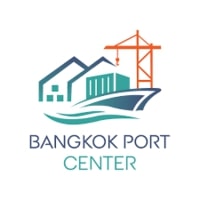
others information :
- the Port of Bangkok is generally considered to be the country’s most important port in terms of freight volume handled, international connections and logistical facilities.
- Le port de Bangkok dispose d’installations d’entreposage pour la manipulation et le stockage des marchandises.
Songkhla port
Located in the province of Songkhla, in southern Thailand, the port of Songkhla is an important port for regional trade and mainly handles exports and imports from the region
- The Port of Songkhla has storage facilities for the handling and storage of goods.
- The port of Songkhla is an important regional port in southern Thailand, but it is not ranked among the largest ports in the country.
Phuket port
The port of Phuket is located on the west coast of the island of Phuket, in southern Thailand. Although he is best known for tourism and recreational operations, he can also handle some shipments of goods. It should be noted that the Port of Phuket is not a major port for commercial cargo and does not have the capacity to handle large volumes of cargo. It focuses mainly on the tourism and leisure industry.
Laem Chabang Port
Located about 130 kilometres southeast of Bangkok, the port of Laem Chabang is the largest and busiest port in Thailand. It is located on the east coast of the Gulf of Thailand and is an important transshipment centre for the region.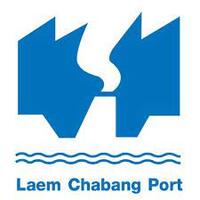
- The port of Laem Chabang is one of the busiest ports in Thailand. It hosts a significant number of ship stops every day.
- The warehouses in the port are large and offer considerable storage capacity.
Main Ports in Morocco
Port of Casablanca
Located on the Atlantic coast, the Port of Casablanca is the largest and busiest port in Morocco. It serves as a major gateway for container traffic, handling a significant portion of the country’s imports and exports. The port is well-equipped with modern infrastructure and facilities to accommodate large vessels and a wide range of cargo.
Port of Tangier-Med
Situated near the city of Tangier, the Port of Tangier-Med is one of the largest and most modern ports in Africa. It is strategically located at the entrance of the Mediterranean Sea, serving as a vital transshipment hub for international trade between Europe, Africa, and Asia. The port has multiple terminals dedicated to container handling, ro-ro (roll-on/roll-off) operations, and passenger ferries.
Port of Tanger Ville
Also located in Tangier, the Port of Tanger Ville is an important port for ferry services connecting Morocco with Spain and other countries in the Mediterranean. It handles both passenger and cargo traffic, serving as a crucial maritime link between Morocco and Europe.
Port of Agadir
Situated on the Atlantic coast in southern Morocco, the Port of Agadir is a major fishing port and commercial port. It specializes in handling fishery products, including processing and export. The port also facilitates general cargo and container shipments, supporting the region’s agricultural and industrial activities.
Transit time between Thai ports and Moroccan ports
Here is a summary table of the average transit times, in days, between the largest Thai and Moroccan ports
| Bangkok | Laem Chabang | Songkhla | Phuket | |
|---|---|---|---|---|
| Port of Casablanca | 34 | 34 | 26 | 30/45 |
| Port of Tangier-Med | 29 | 29 | 26 | 26 |
| Port of Tanger Ville | 29 | 29 | 26 | 26 |
| Port of Agadir | 30/45 | 30/45 | 30/45 | 30/45 |
*These transit times between Thailand and Morocco are given as a guide.
Do I have to ship in groupage or a full container between Thailand and Morocco?
Full Container Load
for this type of shipment, one person will use the full capacity of the container. This minimizes the risk of damage to goods.
This method would still be beneficial even if you do not completely fill the container. However, it is the most profitable for shipments over 15 m³ in size.
Less than Container Load
This type of shipment allows several people, who do not have enough goods to fill an entire container, to use the same container. The goods of different people are thus combined to fill an entire container.
This is the most cost-effective choice for small shipments under 15 m³ in size.
Advantages of Maritime Groupage
- The advantageous rate for small volumes.
- Allows fewer but more frequent shipments, thus reducing storage expenses.
Disadvantages of Maritime Groupage
- Delivery times often longer due to loading and unloading of goods from all customers.
- Increased risk of loss and damage from multiple loads and unloadings.
Full Container Load Benefits
- The advantageous rate for large shipments of goods.
- Reduced risk of damage or loss of cargo as containers are not opened during transport.
Disadvantages of the complete container
- A minimum volume of at least 15 m³ to be profitable.
Special maritime transport between Thailand and Morocco
Refrigerated container
The refrigerated container is used to transport chemicals or perishable products at controlled temperatures. It is equipped with a cooling system.
Roro
Roll On/Roll Off (RORO) ships are used to transport vehicles such as cars, trucks, vans, semi-trailers and wagons. They are considered the safest and most efficient vessels for heavy or special cargo.
Bulk
OOG
Le fret OOG est un fret qui dépasse les dimensions d’un conteneur standard . Deux types de conteneurs existent pour ces marchandises :
- Open Top Container : ils n’ont pas de toit, ce qui permet de charger des marchandises qui dépassent la hauteur des conteneurs.
- Flat Rack Container : ce sont des conteneurs plats sans parois latérales ni toits, utilisés pour les marchandises qui ne peuvent pas être chargées dans des conteneurs standards.
OOG cargo is cargo that exceeds the dimensions of a standard container. There are two types of containers for these goods:
- Open Top Container: they have no roof, which allows to load goods that exceed the height of the containers.
- Flat Rack Container: flat containers without side walls or roofs, used for goods that cannot be loaded in standard containers.
How much does sea freight cost between Thailand and Morocco?
- – The nature of the goods
- – The volume
- – The weight
- – The distance
- – The conditions of carriage
- – Port charges
- – Other additional costs.
Exact rates can be obtained from shipping companies or freight forwarders specialized in shipping. It is recommended to contact them directly to obtain accurate and up-to-date quotes.
However, to give a general idea of the cost, shipping costs:
For a standard 20-foot container (TEU): This ranges from €1,500 to €4,000.
For a 40-foot container (FEU): This ranges from €2,500 to €6,000.
Tariff surcharges
- Bunker Adjustment Factor (BAF): This surcharge is applied to account for fluctuations in fuel prices. It covers the cost of bunker fuel consumed by the vessel during the voyage.
- Currency Adjustment Factor (CAF): This surcharge is levied to account for currency exchange rate fluctuations between the currencies of the origin and destination countries. It helps mitigate the impact of currency fluctuations on shipping costs.
- Peak Season Surcharge (PSS): During periods of high demand, such as peak shipping seasons, carriers may implement a surcharge to manage capacity and ensure smooth operations. This surcharge is typically temporary and can vary depending on market conditions.
- Port Congestion Surcharge: If there is congestion or delays at a particular port, carriers may impose a surcharge to cover the additional costs incurred due to the congestion.
- Security Surcharge: This surcharge is applied to cover the costs associated with complying with security regulations and measures for cargo transportation.

Air freight between Thailand et Morocco
Conventional or express air freight
There are 2 types of air freight :
- Conventional air cargo: Conventional air cargo involves the shipment of goods by air on scheduled flights. This mode of transport may be cheaper, but it may take longer as it depends on the scheduled flight schedules. It is generally suitable for shipments of large or less urgent goods.
- Express air freight: Fast air transport is faster and more efficient. To move goods quickly, it uses carriers specialized in express deliveries to their destination. Although often more expensive than traditional cargo, this type of air cargo is ideal for urgent shipments or high-value-added goods.
Shippers must assess their needs in terms of delivery time, the nature of the goods and the budget before choosing between traditional or express air cargo. It is also advisable to contact airlines or logistics service providers for precise information about the available options and the corresponding rates.
There is two types of air freight and here you can find the pros and cons for those two
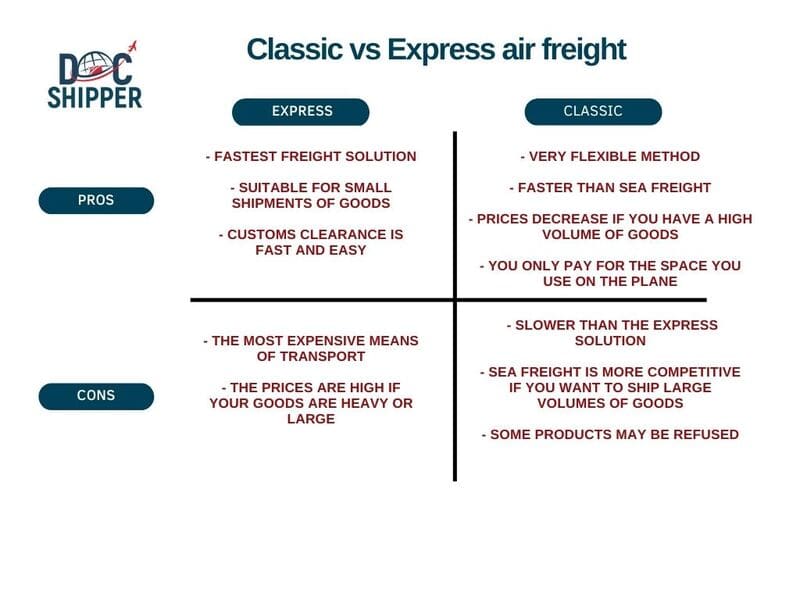
Principals Airports of Thailand
- Suvarnabhumi International Airport (BKK) – Located in Bangkok, this is Thailand’s main and busiest international airport. It serves many international and domestic destinations.
- Don Mueang International Airport (DMK) – Also located in Bangkok, it is the second largest airport in the country and is mainly used by low-cost airlines and domestic flights.
- Phuket International Airport (HKT) – Located in the province of Phuket, this airport is an important gateway to popular tourist destinations in the region, including the surrounding islands.
- Chiang Mai International Airport (CNX) – Located in Chiang Mai in northern Thailand, this airport serves a large part of the region and is a gateway for visitors wishing to explore the culture and landscapes of northern Thailand.
Principals Airports of Morocco
- Mohammed V Airport (CMN) – Located in Casablanca, it is Morocco’s largest airport and the country’s main international hub. It offers flights to many destinations in Africa, Europe, North America and the Middle East.
- Marrakech-Menara Airport (RAK) – Located in Marrakech, this airport is one of Morocco’s main tourist gateways. It hosts a large number of charter and regular flights from Europe.
- Fez Sai Airport (FEZ) – Located in Fez, this airport serves the historic city of Fez and surrounding areas. It offers domestic and international flights.
- Agadir-Al Massira Airport (AGA) – Located in Agadir, this airport is a major entry point for tourists to the Agadir region and the Atlantic coast of Morocco.
- Tangier Ibn Battuta Airport (TNG) – Located in Tangier, this airport plays a key role in the economic development of the northern region of Morocco and facilitates international and domestic travel.
- Rabat-Salé Airport (RBA) – Located in Rabat, the capital of Morocco, this airport offers flights to national and international destinations, serving the city itself as well as the surrounding region.
What are the advantages of air transport?
- Speed of transport
- Rarely late
- Good geographic coverage
What are the disadvantages of air transport?
- High price
- Impossible to transport very heavy goods
- Security at the airport is much higher which can make you waste time when checking
How much does it cost to transport air cargo between Thailand and Morocco
To know the price of your goods transported from Thailand to Morocco by air cargo, you must consult the tariffs of the airlines. Their tariffs are presented by weight bands in decreasing prices.
The weight taken into account by the airlines will always be the one that is to their advantage, that is the highest between the actual weight and the dimensional weight.
How to calculate the dimensional weight of your shipment?
Dimensional weight is the volume occupied by a package, based on its dimensions and gross weight. To find out, you need to measure the package’s dimensions (length, width and height) and then convert them to cubic metres. Then use the formula below:
Poids volumétrique = (longueur x largeur x hauteur) / 500
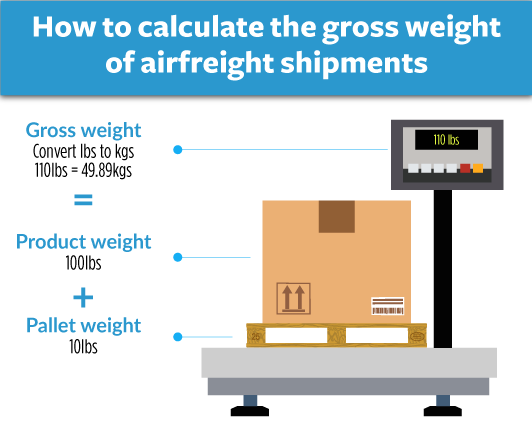
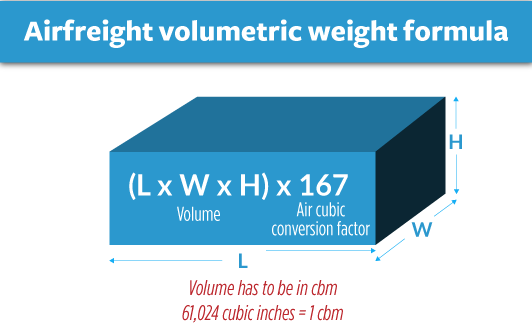

Door-to-door delivery
If you don’t have time for transportation, door-to-door delivery is for you. This method is simple, your goods will be picked up directly at your home, then delivered to the desired destination. You will have nothing to worry about and your belongings will be safe with professionals.
What are the benefits of door-to-door services?
- Fast delivery: As everything is finished within 24 hours, you can send it if your delivery time is within the day.
- Home delivery is always available, so your package will arrive even late at night or during the holidays.
- Convenience: Receiving the package at home rather than having it delivered is better for you.
- Your cargo can be qualified for courier delivery if it is a manageable size.
What are the benefits of door-to-door services?
- Coût élevé : Le coût augmente avec l’urgence de la cargaison, ainsi qu’avec la taille et le poids du colis, qui affectent également le coût.

Customs clearance from Thailand to Morocco
Customs clearance in any country is an important and mandatory step that must be taken when importing and exporting.
When you import goods into Morocco , customs clearance will consist of paying customs duties and VAT . You must also be attentive to the regulations and standards of the country where you ship to avoid your goods being blocked at customs .
The products prohibited and regulated in Morocco are:
- Prohibited products: used clothing, used tires, and rugs and certain dangerous materials ( firearms, explosives)…
- Regulated products: food, animals, art objects, medicines, products, etc
Customs value
The customs value is the real economic value of the goods. Its estimation is based on precise rules harmonised at European level. Thus, the general rules for the determination of customs value provide for several valuation methods.
The customs value permits the importation of goods to determine the duties and taxes which will be levied by the State: customs duties, additional duties, anti-dumping duties, granting of seafares, VAT, etc., and on export, to obtain the basis for certain duties and to collect the data necessary for the statistical monitoring of external trade.
What are customs duties in Thailand?
In Thailand, customs duties and taxes may vary depending on the nature of the imported goods and their tariff classification in accordance with the Harmonized System (HS). Here is some general information about customs duties and taxes in Thailand:
- Customs duties: Customs duties in Thailand vary by commodity and can be expressed as a percentage of the value for duty (value of goods plus transportation and insurance costs) or as a fixed amount per unit of measure (for example, per kilogram). Tariffs can range from 0% to higher rates for specific products.
- Value-added tax (VAT): Thailand applies a value-added tax (VAT) on imported goods. The standard VAT rate in Thailand is 7%. However, some products, such as commodities, may be exempt from VAT or benefit from a reduced rate.
- Other taxes and fees: In addition to customs duties and VAT, there may be other taxes and fees applicable depending on the type of imported products. For example, there may be environmental taxes, licence fees, excise taxes on certain specific products, etc.
It is important to note that duties and taxes can be subject to regular changes and adjustments.
What are customs duties in Morocco?
In Morocco, the duties and taxes applicable to imported goods can vary depending on the type of product and its classification according to the Harmonized System (HS). Here are some general details about duties and taxes in Morocco:
- Customs Duties: Customs duties are levied on imported goods and are calculated based on the customs value of the goods, which includes the cost, insurance, and freight (CIF) value. The rates of customs duties can vary depending on the product and can range from 0% to higher rates for specific goods.
- Value Added Tax (VAT): Morocco imposes a Value Added Tax (VAT), known as “Taxe sur la Valeur Ajoutée” (TVA) in French, on imported goods. The standard VAT rate in Morocco is 20%. However, certain goods may be subject to reduced rates or exemptions.
- Other Taxes and Fees: In addition to customs duties and VAT, there may be other taxes and fees applicable to specific products in Morocco. For example, excise taxes can be imposed on certain goods such as alcohol, tobacco, and petroleum products.
It’s important to note that the duties and taxes in Morocco can be subject to change and periodic adjustments by the government.
How to calculate customs duties and taxes?
The calculation of customs duties and import taxes in Morocco can be a complex process that depends on several factors, such as the type of product, its value and its country of origin. Here are the general steps to follow:
- Determine the tariff classification of the product: The first step in calculating customs duties is to determine the tariff classification of the product. To do this, consult the EU’s Common Customs Tariff (CCT), which lists the different product categories and their corresponding duty rates. You will need to know your product’s Harmonized System (HS) code to determine its tariff classification.
- Determine the value of the product: The next step is to determine the value of the product, which generally corresponds to the invoice value of the goods plus additional charges, such as shipping and insurance.
- Calculate customs duties: Once you have determined the tariff classification and value of the product, you can calculate customs duties. The rate of duty will depend on the tariff classification of the product, its value and the country of origin. You can use the EU TARIC database to search for the duty rate of your product.
- Calculate VAT: In addition to customs duties, you will also have to calculate VAT. The VAT rate in France is currently 20%, but there may be reduced rates for certain products, such as food and books.
- Calculate other taxes or fees: Depending on the product, there may be other taxes or fees to consider, such as excise duties or environmental taxes.It is important to note that the clearance process and the calculation of duties and taxes can be complex. If you do not know how to calculate duties and taxes for your specific import, it is always best to consult a customs broker or freight forwarder like Siam Shipping.
How to find the HS code?
A classification system for products used in international trade is the HS code ( Harmonized System ). It organizes goods into categories according to their nature and destination, This facilitates the collection of statistical data and the clearance process. The HS system contains over 5,000 different products, each of which is classified using a separate eight-digit number.

You can check these sites for the HS code for Thai and Moroccan products
Calculation of customs duties using the HS code
Now that you have the HS code for your products, you can find the associated tariffs on the Moroccan Customs website .
Here is a steps involved to help you understand how to:
- Enter your HS code and country of origin.
- Then, check the taxes applicable to your product.
Does Siam Shipping charge customs duties?
No, no commission is levied on Siam Shipping. For proof, we will send you all official documents provided by French customs. We will only collect customs clearance fees, as we will declare your goods to customs for you.
Royalties related to customs duties and taxes will be collected by the French State.
Customs procedures and contact

The customs services
Moroccan customs
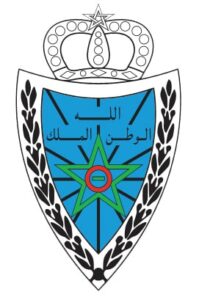
Official name: Customs and Indirect Tax Administration
Official Site: Moroccan customs
What are the required documents?
The technical file shall consist of the following:
- Declaration of conformity (Arable or French).
- Documentation regarding the completion of conformity assessments to technical requirements and specifications:
- A general description of the product,
- As well as design and manufacturing drawings, with a list of components and materials used.
- Descriptions and explanations are necessary to understand the drawings and diagrams mentioned and how the product works.
- A list of the standards that have been fully or partially applied and a description of the solutions used to meet the safety requirements of the Order where the standards have not been applied.
- The results of the design calculations and verifications performed.
Additional logistics services
Venture beyond shipping and customs with SIAM Shipping! Explore our wide array of additional logistics services, ensuring your supply chain operation runs smoothly from start to finish. Let's take care of everything, together.
Warehousing and storage
Finding the right warehouse for your goods can feel like a treasure hunt—a steady temperature for your delicate items is a must. Storing chocolates? You wouldn’t want a meltdown! For a stress-free solution that considers all conditions, explore our warehousing services, designed to keep your goods in prime condition.
Packaging and repackaging
Inherent challenges in shipping from China to France make quality packaging vital. Having a reliable agent can help ensure your wine barrels or electronics are suitably packed and repacked, reducing the risk of damages. Whether it's ceramics securely cushioned or machinery components assembly-segregated, great packaging caters to every product. Find out more about securing your cargo on our dedicated page: Freight packaging.

Cargo insurance
Contrary to fire insurance limited to premises, transport insurance is your flotation device over rough trade seas. Imagine sending a pricey, custom-built machinery and it gets damaged in transit. Ouch! But, with cargo insurance, you're covered and can breeze through such setbacks. It's the booster dose of prevention to keep your trade immunity sky-high.
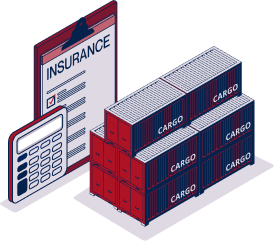
Personal effects shipping
Moving precious belongings from China to France? No worries, we manage fragile or bulky items with extra care, ensuring they reach your new French home intact. Like Aunt Mei's porcelain vase, we pack, transport, and deliver with professionalism. Save time and energy for croissants and vin rouge!
